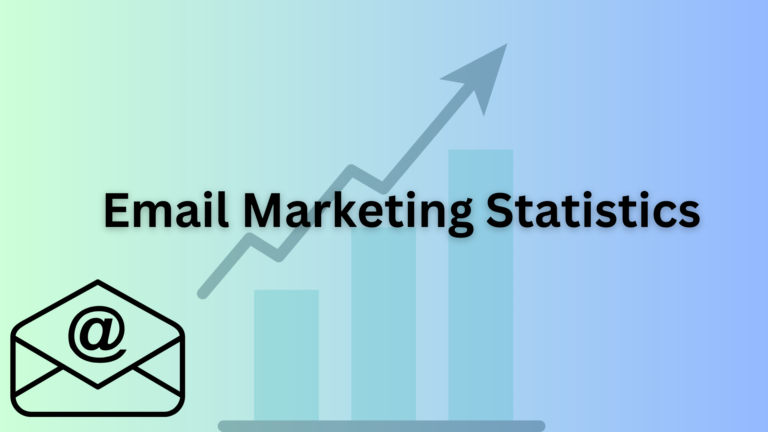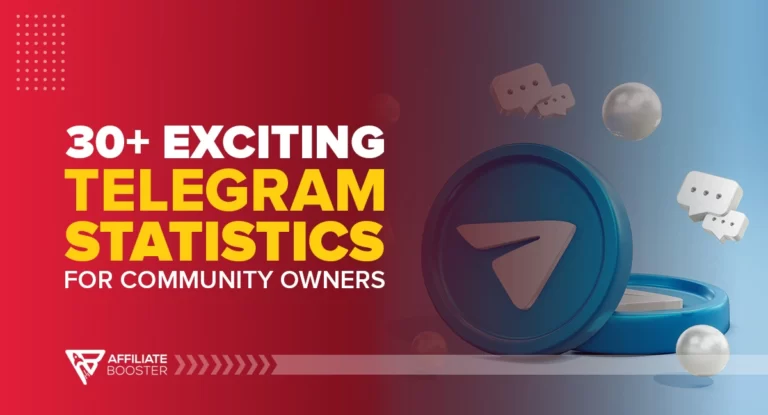Affiliate marketing has become a major force in digital marketing, offering individuals and businesses a chance to earn by promoting products and services. With the industry projected to reach $37.3 billion by 2025, it's growing rapidly and shows no signs of slowing down.
In the U.S., affiliate marketing drives 16% of all online sales, proving its importance in e-commerce. It's also widely used, with 81% of advertisers and 84% of publishers on board, and 31% of publishers depending on it as their primary income source.
What makes it so successful? Businesses typically see a $12 return for every $1 spent on affiliate marketing.
In this article, we’ll break down the latest affiliate marketing statistics and trends to help you make the most of this powerful strategy.
Affiliate Marketing Statistics in 2025
- The global affiliate marketing industry was valued at over $17 billion in 2025.
- Affiliate marketing spending in the U.S. is projected to reach $12 billion in 2025.
- The industry is expected to grow to $27.78 billion globally by 2027.
- Affiliate marketing accounts for 16% of all e-commerce sales in the U.S.
- Over 80% of brands use affiliate marketing programs to drive sales.
- The average affiliate marketer earns $8,038 per month.
- Affiliate marketers with 3+ years of experience earn 9.45 times more than beginners.
- 81% of advertisers leverage affiliate marketing for brand awareness.
- 84% of publishers participate in affiliate marketing programs.
- The industry has grown at a rate of 10% year-over-year since 2015.
General Affiliate Marketing Statistics
- According to wikipedia.org, William J Tobin designed and presented the concept of affiliate marketing to the world in 1989.
- IAB UK’s affiliate marketing produced £8.9 billion in sales in 2017.
- Affiliate marketing produces 16% of eCommerce sales in Canada and the USA.
- Affiliate marketing offers advantages and influences 80% of advertisers and 84% of publishers.
- According to 38% of all global marketers, affiliate marketing is the best to gain customers.
- Only 1% to 5% of affiliate marketers become super successful. Therefore, they are commonly called “super affiliates.”
- Google search volume for the keyword “Affiliate Marketing” doubled between 2015 and 2021.
- 1 out of 10 sales in the eCommerce industry occurs due to the excellent structure of affiliate marketing.
- Nearly 95% of customers read multiple reviews of products on blogs before buying.
- You don't need to create your own products to be a successful affiliate marketer. There are thousands of affiliate companies. Create review content and promote their products.
- Affiliate marketers mostly rely on Search Engine Optimization to get organic traffic. After that, they target social media platforms, video content, podcasting, etc.
- Affiliate marketing is possible in several ways, but the best practices are –
- Social Networking
- SMS
- Email Marketing and
- Blogging.
(Source: Kinsta, Fetch Profit, Master Blogging)
Statistics of Affiliate Marketing Revenue
- The USA affiliate marketing industry reached more than 7 billion dollars in 2020.
- As per the report of Statista, the affiliate marketing industry will be worth 8.2 billion dollars in 2022.
- In 2022 affiliate marketing budget has grown by more than 10% compared to 2021.
- The retail sector represents the majority of affiliate revenues, accounting for 43%.
- Affiliate marketing represents 15% of the overall income of the digital media industries.
- According to 65% of merchants, affiliate marketing accounts for 5 to 20% of the company’s annual revenue.
- 73% of merchants report that affiliate income fulfills their expectations.
- During the COVID-19 in late March 2020, 56% of affiliate advertisers and agencies increased their affiliate channel revenue.
- The toy industry is a fast-moving and thriving company in affiliate marketing, with a 109% growth rate in 2020.
- The second fastest-growing industry is software, with a growth rate of 109% in 2020.
- The third-fastest growing industry is home improvement, with an 86% of growth rate.
- Successful affiliate marketers don't rely on AdSense for generating revenue, as they can make 10X more money than AdSense.
(Source: Business Insider, BloggingX)
Statistics of Affiliate Companies
- Amazon Associates continues to be the largest affiliate network and has the most active affiliate sites.
- Software services, web hosting programs, and digital tools are the highest paying affiliate programs to join in 2022.
- 8 out of 10 brands, meaning 80% of businesses run affiliate marketing programs.
- A company offers 1% to 60% (or more than that) commissions to an affiliate.
- Amazon associates, Awin, Skimlinks, VigLink, ShareASale, Hostinger, Impact, Flexoffers, Shopify, and BigCommerce, are the top 10 affiliate programs in 2022.
- Hostinger, Elementor, Cloudways, SiteGround, GreenGeeks, WP Engine, SEMrush, Kinsta, and Liquid Web are the top 10 high-paying affiliate programs to join.
- Most companies charge zero money for joining their affiliate programs.
(Source: Influencer Marketing Hub, Master Blogging)
Statistics of Affiliate Niches and Products
Top Performing Affiliate Niches
| Niche | Popularity / Growth Factors |
|---|---|
| Fashion & Apparel | Seasonal demand, high interest |
| Tech & Electronics | High-ticket value, fast updates |
| Health & Wellness | Supplements, mental wellness, fitness programs |
| Software & Hosting | Recurring revenue, high commission |
| Beauty & Skincare | Visual appeal, ideal for influencers |
| Finance & Investment | High commission but regulated |
| Gaming & Digital Goods | Young audience, frequent releases |
| Education & Courses | Growing due to online learning demand |
- Fashion and apparel are among the most promoted categories, with high consumer interest and seasonal demand.
- Tech and electronics products are consistently strong performers due to high-ticket value and recurring interest.
- Health and wellness is a fast-growing niche, especially with the rise of supplements, fitness programs, and mental health apps.
- Online services like hosting, VPNs, and software subscriptions are popular due to high commissions and recurring payments.
- Beauty and skincare are ideal for influencers and content creators because of their visual appeal and loyal customer base.
- Finance and investment niches (credit cards, loans, etc.) often offer very high commissions but are highly regulated.
- Gaming and digital products attract younger audiences and often offer affiliate opportunities with unique promo codes or in-game items.
- Pet products, especially premium food and accessories, are gaining traction as pet ownership grows.
- Home improvement and DIY niches are popular due to increased interest in home makeovers and personal projects.
- Education and online courses are becoming a top niche as more people learn online and look for career upskilling.
Statistics of Affiliate Marketers
- Most affiliate marketers are individuals or small teams working remotely or part-time.
- Around 9% of affiliate marketers earn over $50,000 per year.
- High performers can earn six figures or more, especially in finance, SaaS, and health niches.
- The average affiliate earns roughly $8,000 per month, but results vary greatly.
- Affiliate income often depends on traffic source, content quality, and conversion strategies.
- Many marketers start as bloggers or YouTubers before branching into affiliate work.
- Only a small percentage of affiliate marketers succeed without consistent effort or a clear strategy.
- SEO and email marketing are two of the most commonly used tools among affiliates.
- More than half of affiliate marketers work on multiple platforms (blogs, social media, forums).
- Many successful affiliates reinvest their earnings into paid traffic, tools, and content upgrades.
(Source: Hosting Tribunal, VigLink, CloudWays)
Statistics of Contents In Affiliate Marketing
- Blog articles, tutorials, and product comparisons are among the most effective types of content.
- Long-form content tends to drive more conversions than short posts.
- Product review articles are especially effective for affiliate links.
- Listicles (e.g., “Top 10 X”) have higher click-through rates in affiliate content.
- How-to guides and demos build trust and improve user engagement.
- Many affiliates use SEO-optimized content to generate long-term passive income.
- Video content, especially on YouTube, is a fast-growing format for affiliate marketing.
- Evergreen content (that stays relevant over time) performs best for affiliate income.
- Content with genuine opinions tends to convert better than overly promotional content.
- Adding comparison tables, FAQs, and call-to-actions improves affiliate performance.
(Source: CloudWays, SimilarWeb)
Statistics of Influencers in Affiliate Marketing
- Most brands have faith in influencers as they gather many potential customers through their blog posts, social media, and video content.
- There are three kinds of influencers on the market: micro-influencers, mid-tier influencers, and nano-influencers.
- 47.3% of Influencers are micro-influencers, 26.8% are mid-tier, and 18.74% are nano.
- Brands love to work with tons of small influencers as they have the highest engagement rate.
- Around 61% of consumers trust influencers and believe in their recommendations. However, only 38% of customers believe in the brand’s content.
(Source: SimilarWeb, Commissionfactory)
Statistics of Customers in Affiliate Marketing
- 45% of millennials use voice assistants to purchase any products.
- Zen-G and Millennials are 44% of buyers as they have been brought up in the digital world.
- 75% of Zen-G and Millennials customers follow and read reviews on social media platforms to purchase their interested products.
- Before purchasing their interested items and products, 54% of social media users read reviews online.
- Potential affiliate customers prefer voice search rather than typing queries on search engines.
- Potential customers likely to purchase products from your blog always search with long queries.
- 80% of customers follow influencers before making a buying decision.
- Customers mainly use Pinterest and YouTube to purchase products.
- 40% of merchants in the USA point to affiliate marketing programs as their premium customer acquisition channel.
(Source: CloudWays, Backlinko)
Statistics of Commission Rates in Affiliate Marketing
📊 Commission Rate Comparison by Product Type
| Product Type | Typical Commission Rate | Notes |
|---|---|---|
| Digital Products | 30% – 50% | High margin, repeat usage |
| Physical Products | 1% – 10% | Lower margins, but higher volume |
| SaaS / Subscription | 20% – 40% (often recurring) | Long-term earning potential |
| Amazon Associates | 1% – 10% | Depends on category |
| BigCommerce | Up to 200% | High payout + enterprise-level commissions |
- Some highly paid affiliate programs reward affiliate marketers $8,000 in a single conversion.
- BigCommerce pays affiliate members a 200% commission for the client's monthly payout.
- Affiliates also get a maximum of $1500 for every enterprise customer.
- According to Influencer Marketing Hub, an average conversion rate in affiliate marketing is usually about 1%.
- Neil Patel says digital affiliate products offer a 50% commission rate, more than physical products, as people can use software products and digital tools repeatedly without damage.
- The most trusted affiliate program, Amazon Associate's commission rate is between 1% to 10%.
- Convert Kit, an email marketing software, offers a recurring 30% commission to affiliates every month.
- A profitable commission rate above 5% is considered good. However, it depends on the niche and product type you choose.
(Source: Bengu Online, Ryan Robinson)
Statistics of Affiliate Marketing and Blogging
- Affiliate marketing is an evergreen industry that grows every year. So, if you want to make money blogging, this is a perfect time.
- Blogging is the 3rd best traffic source in affiliate marketing, with approximately 67% of traffic.
- The affiliate marketers' content pool has expanded by 175%.
- While promoting products, 62% of affiliate marketers are concerned about the quality of their content.
- Just 30% of website owners believe that there are insufficient affiliate products that are suitable and appropriate for their customers.
- After proper keyword research and SEO-optimized content, an affiliate blog site can get 7 times more conversions.
(Source: BloggingX, Master Blogging)
Statistics of Affiliate Marketing and Social Media
- Social media is a major channel for promoting affiliate products, especially for younger audiences.
- Instagram and TikTok are especially popular for lifestyle and product-based niches.
- YouTube allows in-depth reviews, tutorials, and product demos with affiliate links.
- Facebook groups and communities often drive niche-specific traffic to affiliate offers.
- Pinterest works well for evergreen content like recipes, crafts, and fashion.
- Affiliate links perform best when paired with storytelling or personal recommendations.
- Link-in-bio tools help creators organize multiple affiliate links in one place.
- Reels, shorts, and stories help with reach and conversions.
- Affiliate promotions on social platforms need to be disclosed to maintain transparency.
- Social media algorithms reward engaging, authentic content—ideal for affiliate marketers.
(Source: BloggingX, Tradedoubler)
Statistics of Affiliate Marketing & Social Demographics
- More than 5% of all affiliate marketers belong to the 18 to 24 age group.
- According to the Hosting Tribunal, 40% of all digital marketers believe that affiliate marketing is a crucial skill to learn and master.
- 55.32% of affiliate marketing experts are married.
- 33.67% of affiliate marketing experts are unmarried.
- 62.35% of affiliate marketers have children.
- You can learn and master the skills to be a successful affiliate marketer at home.
- Every social media platform, especially a YouTube channel and email marketing, helps affiliate marketers build a healthy connection with the customer.
(Source: Affstart 2016 Affiliate Marketing Benchmark Report)
Statistics of Advertisement in Affiliate Marketing
- Affiliate marketing is one of the most cost-effective advertising strategies.
- Brands only pay for performance—no upfront fees for exposure.
- It complements PPC and influencer marketing by expanding reach.
- Unlike display ads, affiliate links can be naturally placed in content.
- Performance tracking tools make affiliate campaigns easy to measure and optimize.
- Affiliates often help brands reach niche or hard-to-reach audiences.
- Product-specific landing pages improve conversion rates in affiliate ads.
- Ad fatigue is lower in affiliate marketing because of personalized content.
- Affiliate promotions can go viral when tied to trending topics or social proof.
- Many brands see higher ROI from affiliate marketing than from traditional ads.
(Source: Forrest Consulting, Master Blogging)
Statistics of Affiliate Marketing and Modern Technology
- Half of the affiliate traffic comes from mobile devices.
- According to Neil Patel, if your website takes more than 3 seconds to load, 40% of customers will leave your website.
- According to a BigCommerce report, a 1-second delay in your website's page load time can reduce conversation by 7%.
- Around 3% of affiliate marketers use Bitcoin as a payment method.
- 50% of affiliate-referred traffic comes from mobile devices.
- Always have a mobile-friendly website if you want to boost affiliate sales.
- Push notifications, mobile popups, and email marketing are the best methods to retarget your customers.
- Cryptocurrencies have become one of the more promising verticals in affiliate marketing.
- Since digital currency is booming, small business owners have started accepting cryptocurrencies.
- Artificial intelligence tools will make running affiliate marketing campaigns more effective by analyzing plenty of data.
- According to SimilarWeb, AI will increase affiliate marketing sales by 30%.
(Source: Masterblogging, Forbes, Neil Patel)
Statistics of Affiliate Marketing and Countries
- The USA is the top-selling country for affiliate marketers.
- In 2022, total affiliate marketing spending in the USA is 8.2 billion dollars.
- The UK spent more than 670 million dollars in affiliate marketing in 2017.
- In the United Kingdom, affiliate Marketing has an average Return Of Investment (ROI) of 1:15.
- The US makes up 39% of the affiliate marketing Market share.
- In the USA, 74% of online buyers check numerous affiliate websites before making a buying decision.
- 61% of the Australian affiliate market applies the last-click attribution model.
(Source: IAB, Master Blogging)
Future of Affiliate Marketing
- The affiliate marketing industry is expected to reach $40 billion by 2032.
- AI and automation will continue to simplify affiliate workflows and content creation.
- Video and short-form content will play a bigger role in affiliate promotions.
- Influencer-affiliate hybrids will become more common in brand deals.
- Niche targeting and personalized content will drive higher conversions.
- Brands will rely more on performance-based models to control ad spend.
- Mobile-first campaigns will dominate as smartphone shopping grows.
- SEO and voice search optimization will become key for affiliate content.
- Affiliate tracking will become more transparent with improved privacy tools.
- More people will treat affiliate marketing as a full-time career path.
(Source: Taboola)
To Sum Up
We've gathered the latest data and insights from top industry blogs and trusted websites to bring you up-to-date statistics on the affiliate marketing world.
Whether you're a business owner looking to grow your brand or a newcomer to digital marketing hoping to earn online, affiliate marketing could be a powerful opportunity for you.
Take your time to explore these stats and get a deeper understanding of the industry. If you have any questions, feel free to drop them in the comments below!







